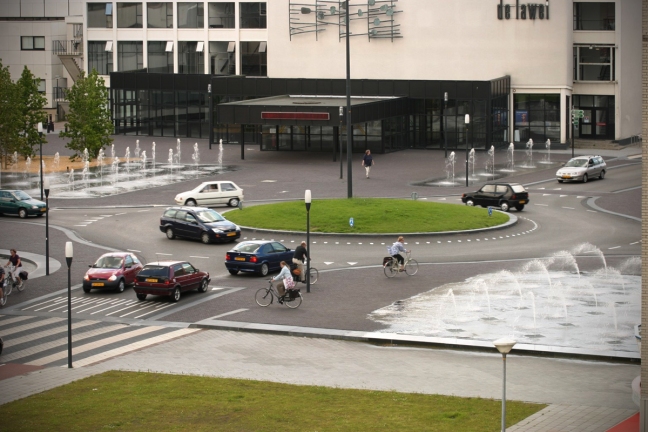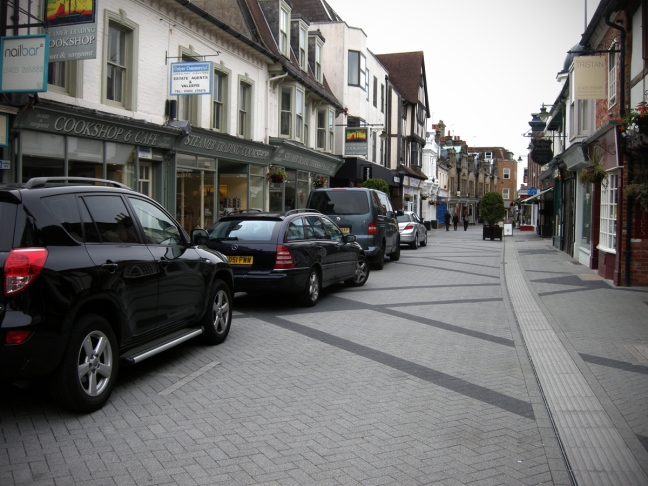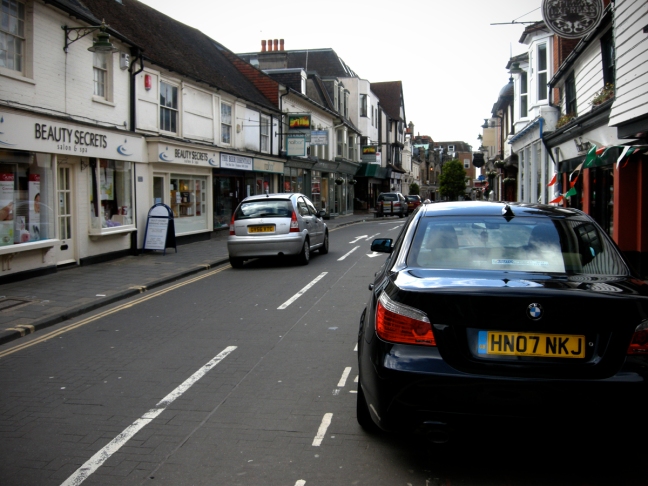 Laweiplein in Drachten, the Netherlands.
Laweiplein in Drachten, the Netherlands.
How do we improve road safety in residential areas? The answer’s simple: make it riskier.
Naked streets is a concept developed by Dutch traffic engineer, Hans Monderman, who proposed that by creating a greater sense of uncertainty and making it unclear who has right of way on a street, drivers reduce their speed and all street users increase their level of risk compensation. This last principle originates from behavioural theory that suggests people adjust their behaviour in response to the perceived level of risk: in riskier environments, pedestrian and drivers respond by behaving more safely.
The practical application of a naked street involves the removal of all hard safety measures, including safety barriers, traffic lights, warning signs, speed humps, pedestrian crossings and road markings. These are all replaced with road surfaces that do not clearly distinguish between vehicle and pedestrian space, ambiguity in defining traffic rules, and a street environment that fosters eye contact and human interaction. The Woonerfgoed, a Dutch network “focussed on the quality of life on the street” further define the naked street or woonerf (Dutch for living street) as a “street primarily meant as a social space, where people can meet, pedestrians and cyclists can move around freely, and children can play safely.”[1] The woonerf was introduced to the Netherlands in the late 1960s and requires that drivers drive at or near walking pace, or under 20km/h.[2]
Monderman drew international attention with a project in 2001, where he was responsible for the upgrade of the Laweiplein, a crowded four-way intersection in the town centre of Drachten in the northwestern Netherlands. He removed the usual clutter of traffic lights, warning signs and pedestrian crossings, and replaced them with an integrated carriageway / footpath surface and a raised roundabout island of grass. Reviews of the changes a year after completion revealed that:
- Congestion had decreased
- Traffic accidents had reduced by half, despite traffic volume increasing by a third
- Drivers and cyclists were more likely to indicate prior to changing direction
- Despite the measurable increase in safety, local residents perceived the intersection to be more dangerous[3]
A favourite demonstration of Monderman’s was to walk backwards and with eyes closed into the intersection. Instead of honking or worse, striking him down, the car and bicycle traffic diverted its way around him. The typical binary experience of stop or go was replaced with a slower, organic, more alert and more human process of negotiation. The increased perception of risk was, according to Monderman, essential: risk induces safe behaviour. If residents had not felt less secure in the Drachten redesign, “he would have changed it immediately.”[4]
In the past thirty years, naked streets have successfully been applied around the world. The concentration is highest in Europe: by 1999, there were 6,000 of them in the Netherlands; in 1991, London’s Kensington High Street was transformed into a shared space environment; the upgrade in 2011 of East Street in Horsham, Sussex, was a significant improvement over the existing car-dominated environment; projects have been successfully implemented in Denmark, Belgium, Germany, France, Sweden and Spain among others.[5] An instructive video showing movement through one such project in Graz, Austria, can be viewed here.
 East Street in Horsham, Sussex: before and after.
East Street in Horsham, Sussex: before and after.
We think that naked street principles, whose essential agenda is to balance traffic movement with social uses of public space[6], is an exciting proposal for Drummond Street. The street is already well used, but high speed car and bicycle traffic, particularly during the morning rush[7], is a considerable impediment to being able to enjoy the space safely. This perception was echoed by your briefing aspirations to us, where many of you identified traffic improvements as important to you.
Footnotes:
[1] Introduction to the woonerf; Woonerfgoed; Delft.
[2] Ibid.
[3] Hans Monderman quoted in Tom Vanderbild; The Traffic Guru; The Wilson Quarterly; Washington; 2008.
[4] Ibid.
[5] Philip Booth; Green Streets are Naked Streets; Resurgence and Ecologist; Devon; 2006.
[6] Naked Streets Policy Briefing; Living Streets; London; 2009.
[7] According to our traffic surveys conducted along Drummond Street in October last year, there are 6.5 times more car and bicycle trips per hour during the morning peak than off-peak times.
Image sources:
- Laweiplein Drachten, How’s Our Driving? in How We Drive. Copyright Tom Vanderbilt.
- East Street before, East Street, Horsham – A shared space that can’t be shared? Copyright for this and the following image belongs to As Easy As Riding A Bike.
- East Street after.
